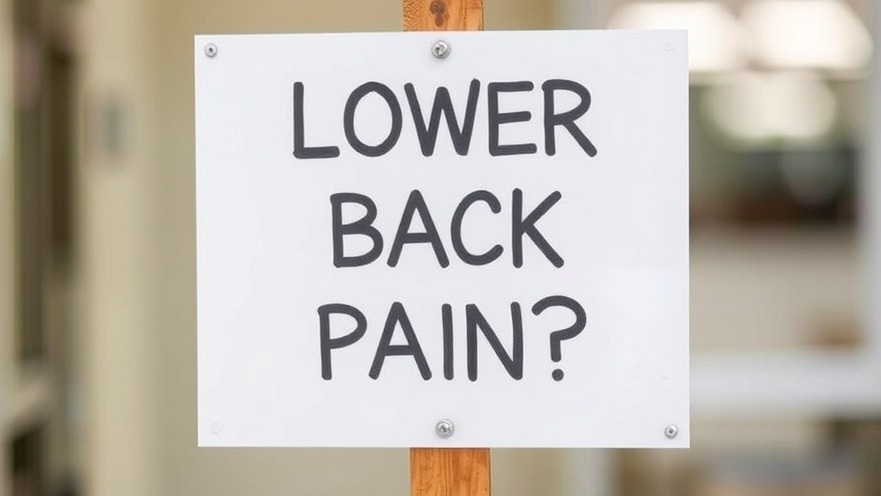
Understanding Lower Back Pain: A Common Struggle
Lower back pain is a pervasive issue that affects countless individuals at various stages of life. From sitting at desks all day to lifting heavy groceries, many daily activities can strain the lower back. This pain can significantly impact one's quality of life, leading to discomfort and decreased mobility. Understanding the causes of lower back pain is the first step toward managing and alleviating it.
In 'Lower back pain relief', the discussion highlights common struggles and effective strategies for alleviating discomfort that inspired our analysis.
Quick Tips for Immediate Relief
Sometimes, relief can come from simple adjustments and exercises. A few minutes of stretching can work wonders in releasing tension. Consider trying gentle stretches like the child’s pose or pelvic tilts. These exercises promote flexibility and can help reduce muscle tension in the lower back. Always remember to listen to your body and stop if a movement causes pain.
Strengthening Your Core: The Key to Prevention
A strong core is crucial for supporting the lumbar region. Exercises that target your abdominal and back muscles can prevent future issues. Incorporate planks, side planks, and bridges into your routine. Just a few minutes of core strengthening each day can lead to significant improvements in how your back feels and functions. Developing this habit not only helps with back pain but also improves posture and balance.
Alternative Therapies Worth Considering
Alongside traditional methods, many people find respite through alternative therapies. Practices such as yoga, Pilates, and even acupuncture can play a significant role in healing the body. For instance, yoga stretches alleviate tension while enhancing flexibility—making it both a preventative and restorative practice. If you haven’t explored these options yet, consider a local class or online session to see what resonates with you.
Creating a Daily Routine that Supports Your Back
Maintaining good posture throughout daily activities is essential in preventing lower back pain. Whether you’re working at a desk or doing household chores, being mindful of how you sit and lift can make a huge difference. Always use your legs to lift heavy objects and avoid prolonged periods of sitting or standing in one position. Integrating movement into your day, like taking short walking breaks, can really help keep your back healthy.
When to Seek Professional Help
If your lower back pain persists despite self-care efforts, it may be time to consult a healthcare professional. They can help determine the underlying cause of your pain and suggest an appropriate treatment plan, which may include physical therapy, medication, or other interventions. Don’t wait for discomfort to escalate—early intervention is key to recovery.
If you’re eager to take your first steps toward managing lower back pain, consider incorporating these strategies into your life. Empower yourself with knowledge about your body and prioritize movements that support your lower back health. Every small step can lead to a significant change in how you feel each day.
 Add Row
Add Row  Add
Add 




Write A Comment